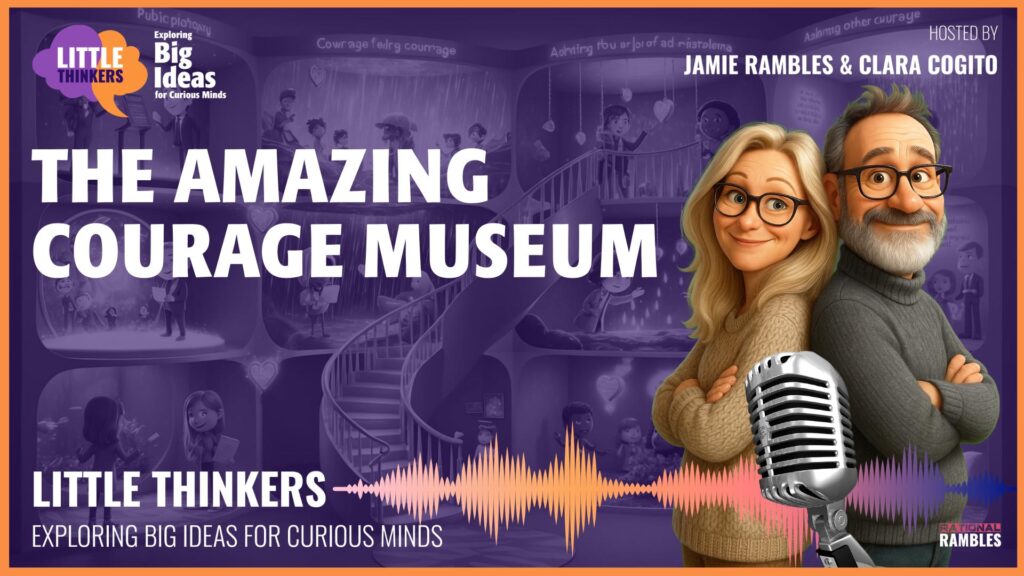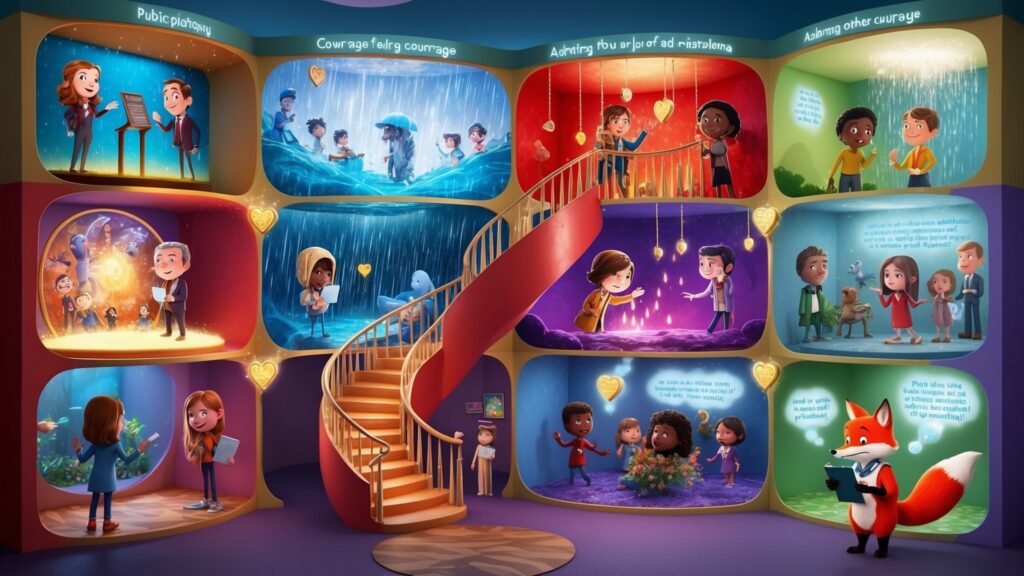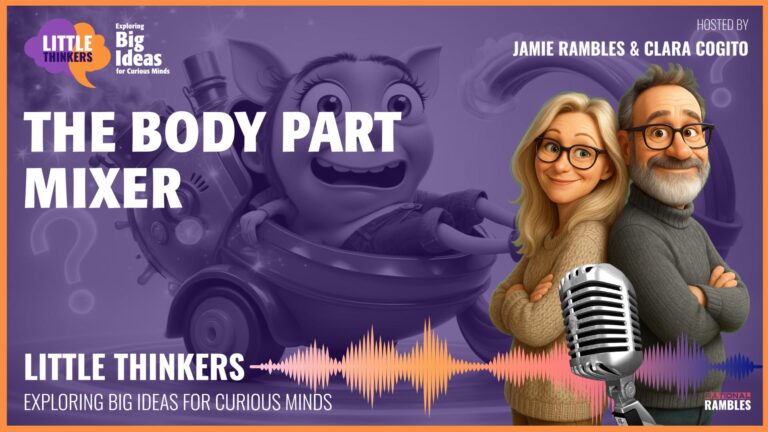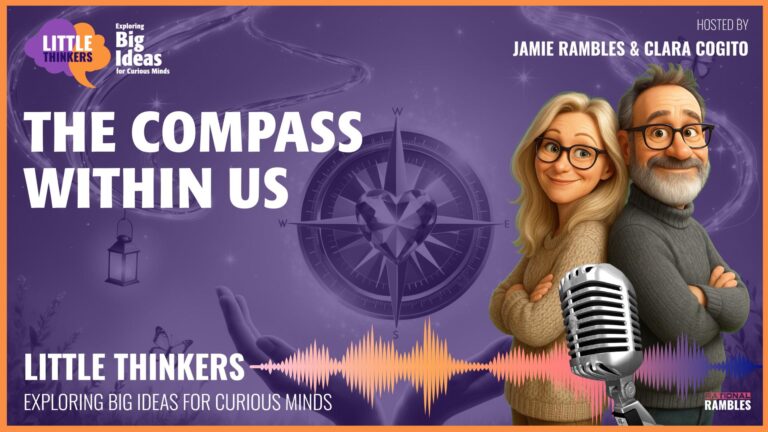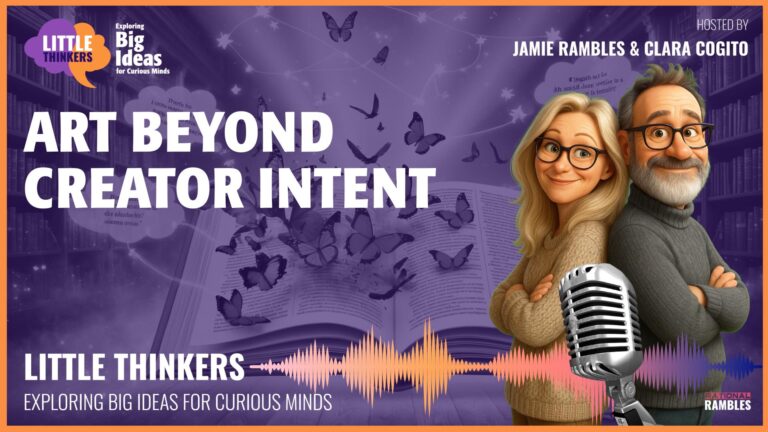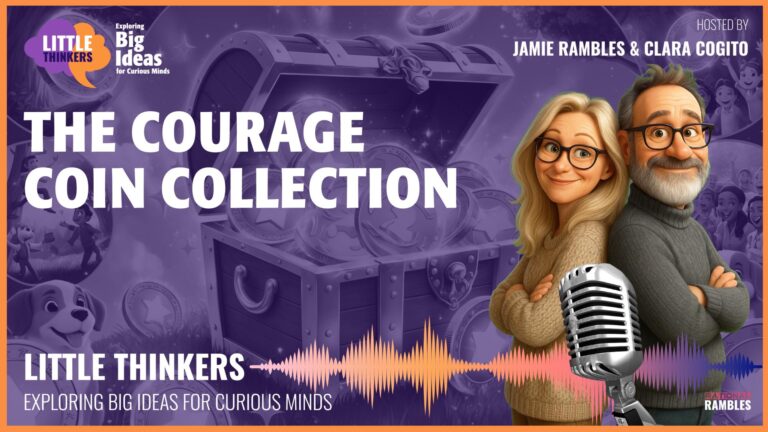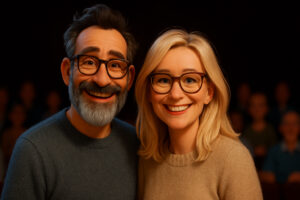The Amazing Courage Museum: Discover Your Superpowers of Bravery!
Welcome to a World of Courage!
Have you ever dreamed about a special museum that doesn’t have dusty old paintings or dinosaur bones, but instead is filled with different types of COURAGE? Imagine walking through doors that lead to rooms all about being brave in different ways! Wouldn’t that be the most amazing place to visit?
In this article, we’re going to explore a magical Courage Museum where each room shows a different kind of bravery. Get ready for an adventure that might help you discover your own superpowers of courage!
What Does Courage Really Mean?
Courage isn’t just about being a superhero or fighting dragons. Courage (which means being brave enough to do something even when it feels scary) comes in many different shapes and sizes!
Sometimes courage is loud and exciting, like jumping off the high diving board at the swimming pool. Other times, courage is quiet and happens inside your heart, like telling the truth when you’ve broken something.
Important fact: Being courageous doesn’t mean you’re never scared! Real courage is feeling afraid but doing the important thing anyway.
Room 1: Speaking Up Courage
The first room in our Courage Museum has a stage with bright spotlights and microphones. This room is all about the bravery it takes to speak in front of others!
Have you ever had to stand up in class and tell a story? Did your heart beat super fast? Did your hands get sweaty? That’s because speaking in front of people takes real courage!
Try this speaking courage exercise:
- Start by telling a joke to your teddy bear
- Next, share a story with one family member
- Then try speaking to three friends at once
- Each time, your “speaking courage muscle” gets stronger!
Room 2: Helper Courage
This special room shows tiny scenes (like dollhouses) where kids are being helpful heroes! It’s all about the courage to help someone when everyone else is just watching.
Imagine you see a kid fall down on the playground, and nobody is helping them up. It takes real bravery to be the first person to walk over and ask, “Are you okay?”
This special kind of bravery is called “bystander courage” – that means being brave enough to step in and help, even when it would be easier to walk away or just watch like everyone else.
Helper courage in action:
When Mia saw some bigger kids taking away a younger student’s lunch box, she felt scared to say something. Her heart was pounding! But she remembered her helper courage and said, “Hey, that’s not kind. Please give it back.” That was true bravery!
Room 3: “I Made a Mistake” Courage
One of the most important rooms has big colorful buttons on the wall. When you press them, you hear the voices of kids saying brave things like “I’m sorry” or “I was wrong” or “I made a mistake.”
Did you know that admitting when you’ve done something wrong is one of the bravest things a person can do? It’s often harder than facing a roaring lion!
Sometimes our brains try to make excuses or blame others because we don’t want to feel bad. But real courage means taking responsibility (that’s a fancy word for owning up to what you did).
Why is saying “I’m sorry” so hard?
When we make a mistake, we worry people might think we’re not smart or good. But the amazing truth is that people usually respect you MORE when you’re honest about your mistakes. That’s because it shows you care about doing the right thing!
Room 4: Try New Things Courage
This fun room is full of strange-looking foods, weird instruments that make funny sounds, and activities you’ve never tried before! It celebrates the courage to try new things!
Some kids find it easy to taste a food they’ve never had before. Other kids might need to build up their “try new things” courage muscles slowly. And that’s perfectly okay!
Did you know?
Our brains are designed to be a little suspicious of new things. Thousands of years ago, this kept our ancestors safe from eating poisonous berries! But in today’s world, we often miss out on amazing experiences if we’re too afraid to try something new.
Room 5: Creative Courage
This colorful room is filled with art supplies, musical instruments, and a stage for performances. It’s all about having the courage to share the things you create!
Have you ever drawn a picture but felt too shy to show it to others? Or made up a song but only sang it when you were alone? Sharing our creative work takes real bravery because we worry people might not like it.
But the world needs YOUR unique creations! No one else sees things exactly the way you do or has the same ideas in their head. Being brave enough to share your creativity makes the world a more interesting place!
Room 6: Face Your Fears Courage
This exciting room has different sections for all kinds of common fears – like a corner with big (fake) spiders for people afraid of bugs, or a mini climbing wall for people scared of heights!
Here’s something SUPER interesting: Someone might zoom right past the spider exhibit without feeling scared at all, but freeze with fear at the public speaking section. Another person might happily climb to the highest point but refuse to touch even a tiny plastic bug!
Why are we all afraid of different things?
Our brains are all wired differently! Some kids might find it super easy to pet a snake but get really nervous about making new friends. Others might love meeting new people but feel terrified of high places. Courage isn’t the same for everyone!
Room 7: Standing Up for Others Courage
This important room shows scenes of kids standing up for friends when someone is being unkind. It takes a special kind of bravery to speak up when you see something wrong happening.
Imagine your friends are making fun of someone’s lunch or clothes. It’s really hard to be the one to say, “Hey, that’s not nice. How would you feel if someone said that to you?” But that small moment of courage can make a huge difference in someone’s life!
Standing up for others sometimes means risking your own popularity, which can feel very scary. But it’s one of the most powerful ways to show courage.
Room 8: Be Yourself Courage
This might be the most magical room in the whole museum! It’s filled with mirrors that show your true self and celebration banners for all the things that make each person special and unique.
Being your true self takes enormous courage sometimes. Maybe you like things that are different from what your friends like. Maybe you enjoy ballet when other boys prefer soccer, or you love science experiments when other girls in your class are into fashion.
A secret about being yourself:
When you have the courage to be your real self, something amazing happens – you find your TRUE friends! These are the people who like you exactly as you are, with all your wonderful quirks and interests. And those friendships are the best kind!
Everyday Heroes Gallery
One of the most inspiring parts of the Courage Museum is the Everyday Heroes Gallery. Instead of famous explorers or superheroes, this gallery has pictures and stories of regular kids doing brave things!
There’s a photo of a girl who learned to swim even though she was terrified of water. Another shows a boy who introduced himself to new classmates on his first day at a new school, even though his tummy felt full of butterflies!
These everyday acts of courage might seem small, but they’re actually HUGE in importance. Most bravery happens in these ordinary moments that no one makes movies about.
Examples of everyday courage:
- Trying again after falling off your bike seven times
- Raising your hand in class when you’re not 100% sure of the answer
- Telling someone how you really feel
- Going to a birthday party where you only know one person
- Standing up for yourself when someone cuts in line
How Our Brain’s Alarm System Works
Did you know your brain has a special alarm system that rings when you’re scared? It’s called the amygdala (say it like: uh-MIG-duh-luh), and it’s like a watchdog that tries to keep you safe.
Sometimes this alarm is super helpful – like when it tells you not to run into a busy street or touch a hot stove. But sometimes it gets a bit too sensitive, like a car alarm that goes off when a leaf falls on it!
When your brain’s alarm goes crazy about things that aren’t actually dangerous – like answering a question in class or trying a new food – that’s when courage comes in handy!
Training your brain’s alarm system:
Each time you do something brave, your brain’s alarm gets a little better at telling the difference between things that are truly dangerous and things that are just new or unfamiliar. It’s like training a puppy to stop barking at friendly visitors!
Why Fear Is Actually Your Friend
It might seem strange, but fear is actually super important! If we weren’t afraid of anything, we might do really dangerous things like petting wild lions or jumping off very tall buildings!
Fear is like a superhero that protects us from harm. The problem is that sometimes our fear superhero gets a bit TOO excited about keeping us safe, and tries to stop us from doing fun or important things that aren’t actually dangerous.
The trick isn’t to get rid of fear completely – it’s to thank your fear for trying to protect you, and then gently explain, “Thanks for trying to keep me safe, but I’ve got this!”
Building Your Courage Muscles
Courage works just like the muscles in your body. The more you use your bravery, the stronger it gets! If you want to build your “speaking in front of others” courage muscle, you start small, just like you’d start with light weights at the gym.
Here’s how to grow your courage muscles:
- Start tiny: If you’re scared of dogs, begin by looking at pictures of friendly puppies
- Take one small step: Then maybe watch dogs playing in the park from a distance
- Practice regularly: Each time you face a small fear, you get stronger
- Celebrate progress: Did something brave? Give yourself a high five!
- Be patient: Growing courage takes time, just like growing taller
Design Your Own Courage Room!
If you could add a new room to the Courage Museum, what would it be? Maybe a room for the courage to try again after failing? Or a room about the bravery it takes to ask for help when you need it?
You could draw your courage room design and include special features like interactive exhibits, games that build bravery, or a courage practice zone!
Remember, we all have different “courage specialties” – areas where we’re already brave, and other areas where we’re still practicing and growing our courage muscles. That’s what makes each person’s courage journey unique and special!
Shining a Light on Fear
Have you ever noticed how scary shadows in your bedroom at night don’t seem so frightening once you turn on the light? Often they turn out to be just your coat hanging on the door or a pile of books!
Talking about our fears works the same way. When we bring our fears out into the open by talking about them, they often shrink down to a more manageable size. It’s like shining a flashlight under the bed and finding there are no monsters – just some lost socks and maybe a toy car!
Next time you’re feeling scared about something, try talking about it with someone you trust. You might be surprised at how much less scary it feels once you’ve put it into words!
Your Personal Courage Journey
Everyone – even grown-ups! – has things they find scary. The Courage Museum would have rooms that challenge absolutely everyone. Even the bravest firefighter or the most confident movie star would find at least one room that makes their heart beat faster!
Being brave isn’t about having NO fears – it’s about not letting our fears stop us from living amazing, full lives and trying important new things.
What kind of courage will you practice today? Maybe it’s raising your hand in class, trying a new food, standing up for someone, or just being your wonderful, unique self. Whatever it is, remember: your courage muscles get stronger every time you use them!
And who knows? Maybe someday someone will build a real Courage Museum, and you can visit all these magical rooms for yourself!

